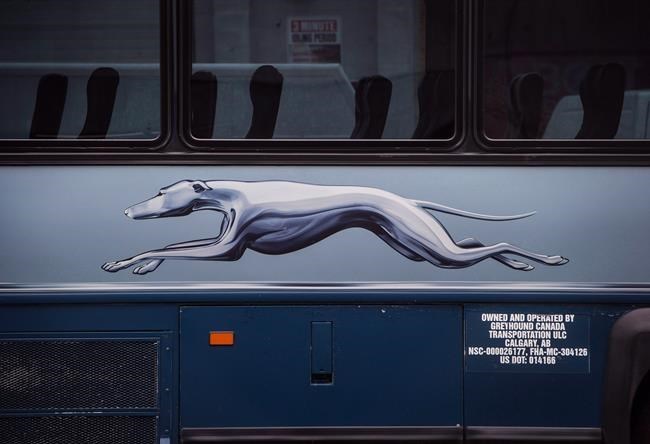 Greyhound’s Canadian operations were founded in B.C., but after 89 years, the last passenger bus will roll to a stop here on Wednesday.
Greyhound’s Canadian operations were founded in B.C., but after 89 years, the last passenger bus will roll to a stop here on Wednesday.
The company’s steady withdrawal from Western Canada culminated in a summer decision to abandon the region completely.
If their service schedule was as brisk as their shutdown timetable, they might have lasted longer. Starting a year ago, the company announced two big retreats in B.C., and capped that with a July decision to bail out completely.
It was incorporated as Canadian Greyhound Coaches Ltd. in November 1929. George Fay and aptly named partner Speed Olson started routes from Nelson to Trail, Kaslo and Nakusp.
The initial fleet was four buses and some seven-passenger touring cars. The company survived the Depression and rode the postwar prosperity wave for decades. It became so well known the brand got genericized, like “Thermos,” “Kleenex” and “yo yo.”
There might be a few emotional goodbyes and politicians are grappling with the problems left by lack of service. But massive indifference seems to be the order of the day.
It’s partly because a number of smaller, more nimble operators have stepped up to take over.
Transportation Minister Claire Trevena said 83 per cent of Greyhound’s network will be covered within a few weeks by operators whose applications have been expedited by the Passenger Transportation Board since July.
(Government moved a lot faster on this than it has on approving ride-hailing.)
A relatively small number of routes have not yet been taken over in the Kootenays, the North and the Thompson Okanagan regions.
The most obvious route to southern residents without a successor is the Hope-Princeton run.
In the last chapter of its life in Western Canada, Greyhound was mostly an off-hours freight service that picked up passengers only incidentally, usually at inconvenient times.
Greyhound Canada is an institution that couldn’t keep up, so down it goes, at least everywhere west of Ontario.
In one of its filings with the Passenger Transportation Board as it was disengaging from B.C, the company outlined a litany of financial problems.
It said it had been unprofitable for many years due to market conditions and publicly subsidized competition. There was intercity competition from ride-sharing, cut-rate airlines and subsidized public transportation that offered fares up to 80 per cent cheaper.
It disclosed a $70-million loss over the previous six years — $35,000 a day — and a 46 per cent decline in ridership since 2010.
More generally, it cited increased urbanization, which has left rural routes with fewer passengers.
A Senate committee several years ago also looked at bus service from a broader perspective. It mentioned rising incomes and increased car ownership as negative forces.
So sustained prosperity is considered a negative factor as well, as far as bus services are concerned.
B.C. is looking for expressions of interest to fill in the remaining 17 per cent of Greyhound’s former network. Trevena was pleased with the interest so far and sounded confident that it will be covered.
It will be a patchwork of small and mid-sized operators, using everything from 55-passenger coaches to vans seating as few as seven people. Rider Express (Vancouver-Winnipeg, $280), Silver City Stage Lines, Whistler Rides and Merritt Shuttles are some of the new names to be seen on the highways, along with established firms such as Wilson’s.
“They looked at the market, they think they can make it work by providing better service,” said Trevena.
The province stepped in directly with $2 million to fund B.C. Bus North on the Prince George-Prince Rupert route. But that was mostly due to political sensitivities about the Highway of Tears and the dangers to women along that corridor.
Surprisingly, that’s the extent of public investment so far. No public money has gone to the private companies applying for the routes. Greyhound repeatedly asked for government help and got nothing. It looks like that stance is holding.
Wednesday will go down as a bit of a marker for rural B.C. Subject to all routes being taken over successfully, Greyhound’s withdrawal heightens the rural-urban split, and widens the service gaps between B.C.’s half-dozen big cities and the rest of B.C.



